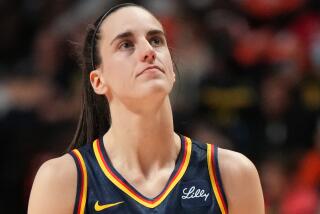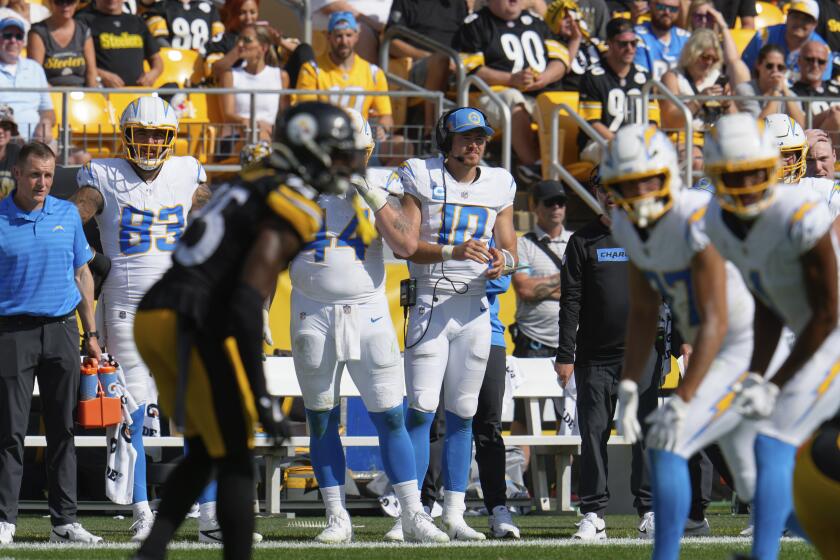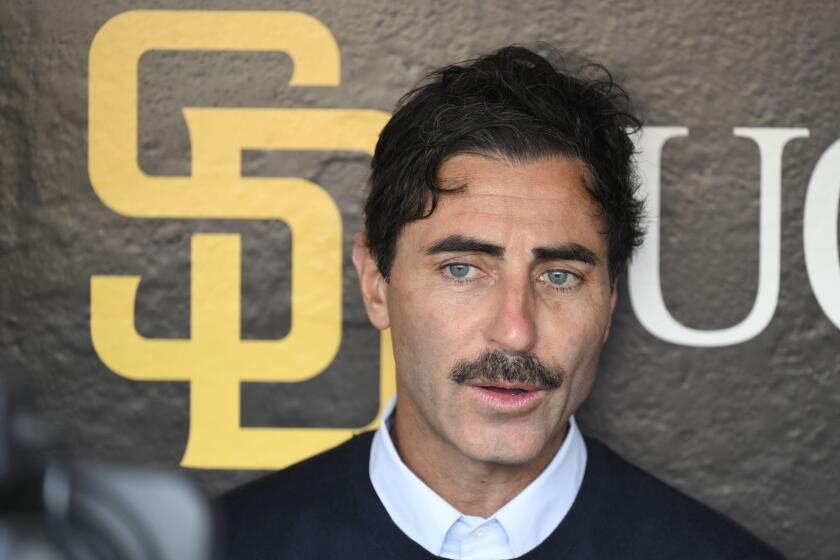Sorry, Francisco Rodriguez, save totals could be moot if analytics rule Hall of Fame debate

Francisco Rodriguez had a work of art sitting next to his locker last week in the visiting clubhouse in Anaheim, a depiction of him pitching, with these words in white letters next to his image: “Career Save #400.”
Hall of Fame?
“In my mind, it’s a slam dunk,” said his first manager, the Angels’ Mike Scioscia.
Probably not, based on recent voting history, but we’ll get back to that. We’re wondering if the growing analytical influence in baseball might someday mean the 400-save club will be closed to new members.
It’s an exclusive club as it is. Rodriguez, now with the Detroit Tigers, is the sixth player with 400 saves, joining Mariano Rivera, Trevor Hoffman, John Franco, Billy Wagner and Lee Smith. Rivera (652) and Hoffman (601) are the only members of the 500-save club.
Jonathan Papelbon needs 37 saves for 400; he’ll be 36 next season, if he gets a job. Craig Kimbrel has 237 saves at age 28; he should get to 400. Kenley Jansen has 157 saves and Aroldis Chapman 153; each is 28 and would need to stay healthy and effective into his late 30s to get to 400.
That might be it.
Jansen is one of baseball’s elite closers, but he can file for free agency this fall, and he has said the Dodgers have not proposed a new contract to keep him. The Dodgers are far from the only team to wonder whether a nine-figure annual salary for a guy who may pitch three innings a week might be better spent on a starting pitcher or everyday player, or at least better spread among several players.
For all but the very finest of closers, analytics suggests the performance of relief pitchers can vary wildly enough to make a long-term contract imprudent. The save statistic itself could be endangered; the analytics community generally would love to do away with victories and saves for pitchers.
And, as front offices assert greater control over on-field management, teams might be more likely to embrace the analytical tenet that the best reliever should be used at a critical point in the seventh or eighth inning rather than reserved for a save opportunity in the ninth inning.
“The whole high-leverage idea?” Angels closer Huston Street said. “It’s the dumbest idea ever.”
Street said he did not believe analytics had taken into account the physical toll in getting the best reliever ready in a hurry. Say a team leads by one or two runs in the seventh inning, the first two opposing batters are retired, but the next two reach base. That team could rush to get its best reliever ready and use him then, or it could have that reliever warm up as the third out is recorded and save him for later in the game.
“You can’t get a guy ready instantly,” Street said. “And there are physical consequences to asking a guy to get loose, and then sit down, and then get hot, and then sit down.
“I probably get up 100 times a year, 110 times a year. I may only pitch in 65 games. I’m still getting loose or getting hot two out of every three days.”
Street, a two-time All-Star pitching for his fourth major league team, said relievers perform best when they have a defined role and can prepare accordingly.
“I’ve been in bullpens where we didn’t have roles,” he said. “It was an absolute mess.”
We’ll see how bullpens evolve, but Scioscia did not need to peer into the future to say a dominant closer might become a rare commodity.
“Over the last 10 years, you’ve been seeing more bullpens doing it by committee, and more match-up type things, because maybe a team does not have that one dominant guy,” Scioscia said. “So, when that guy is there, he’s going to stand out more.”
No closer stood out more than Rivera, who should breeze into the Hall of Fame in 2019, his first year of eligibility. Hoffman got 67% of the vote last year, his first on the ballot, and he’ll get the required 75% soon.
But Wagner got 11% last year, his first on the ballot. Franco got 5% and fell off the ballot. Smith has one year left on the ballot, but his support has fallen from 51% to 34%.
So, 600 saves appears to be a benchmark for election, and 400 does not.
Rodriguez, 34, is a six-time All-Star, and his 62 saves for the 2008 Angels remain the single-season record. He might need 500 saves, after which the man they call K-Rod might lock the closer’s door to Cooperstown behind him. However, as younger and more analytically minded voters join the Hall of Fame electorate, Rodriguez might just as easily be locked out.
Swinging friar
The lowest of a variety of lowlights in the history of the San Diego Padres? The instinct is to say July 25, 1990, when Roseanne Barr screeched the national anthem and grabbed her crotch; or April 9, 1974, when owner Ray Kroc seized the microphone from the public address announcer and bellowed to the crowd: “I have never seen such stupid ballplaying in my life.”
On Wednesday, the day after the last-place Padres gave up 16 runs and used two position players to pitch, executive chairman Ron Fowler went on the radio in San Diego. He called the Padres’ performance “embarrassing” and “pathetic,” and he invoked the Kroc moment without anyone asking him about it.
“I can understand how Kroc could have grabbed the microphone,” Fowler told Mighty 1090.
Kroc apologized, under pressure from Commissioner Bowie Kuhn and players union chief Marvin Miller. Fowler did not apologize.
“In a normal environment,” Fowler said, “if you had performed as well as we have over the last three years, you’d probably be unemployed.”
He was talking about the players – he referenced guaranteed contracts – but the Padres have won 76, 77 and 74 games in three full seasons under Fowler and the current ownership group. The Padres are on pace to win 64 games this season.
On Thursday, for the second time in three games, the Padres gave up 16 runs. This time, they blew a 10-run lead and gave up 14 unanswered runs.
The Padres play host to the All-Star Game this year. Their likely token representative? Thrice-traded pitcher Drew Pomeranz or 39-year-old closer Fernando Rodney.
Truthiness in ball
Cleveland Indians outfielder Marlon Byrd packed his bags and headed into probable retirement as a two-time cheater, but not before his advisors had crafted a statement in his name that left the impression he was either a liar or an idiot.
Byrd, 38, was suspended for one year on Wednesday after testing positive for a growth hormone, his second offense under baseball’s drug policy. Only he knows whether the words attributed to him represent the truth or a careful avoidance of legal jeopardy, but let us take the words at face value.
Byrd blamed his first offense on a positive test for a banned substance he said he used on “the advice of a physician for a medical condition.” That was in 2012, and Byrd said he had subsequently “paid close attention to the substances that are banned.”
In a Clintonian turn of phrase, he said, “I had no intention of taking any banned substances.” He blamed this positive test on a tainted supplement taken with the “assistance and advice” of a “medical professional.”
However, he notes that not all of those supplements were approved under baseball’s drug policy. To recap: Byrd said he was well aware of what supplements he could take to stay clean, and he took others anyway.
His return on investment was good. In 2013, one year after he served a 50-game suspension, he got a two-year, $16-million contract. The guaranteed money he loses with this suspension: $700,000.
twitter: @BillShaikin
More to Read
Go beyond the scoreboard
Get the latest on L.A.'s teams in the daily Sports Report newsletter.
You may occasionally receive promotional content from the Los Angeles Times.











